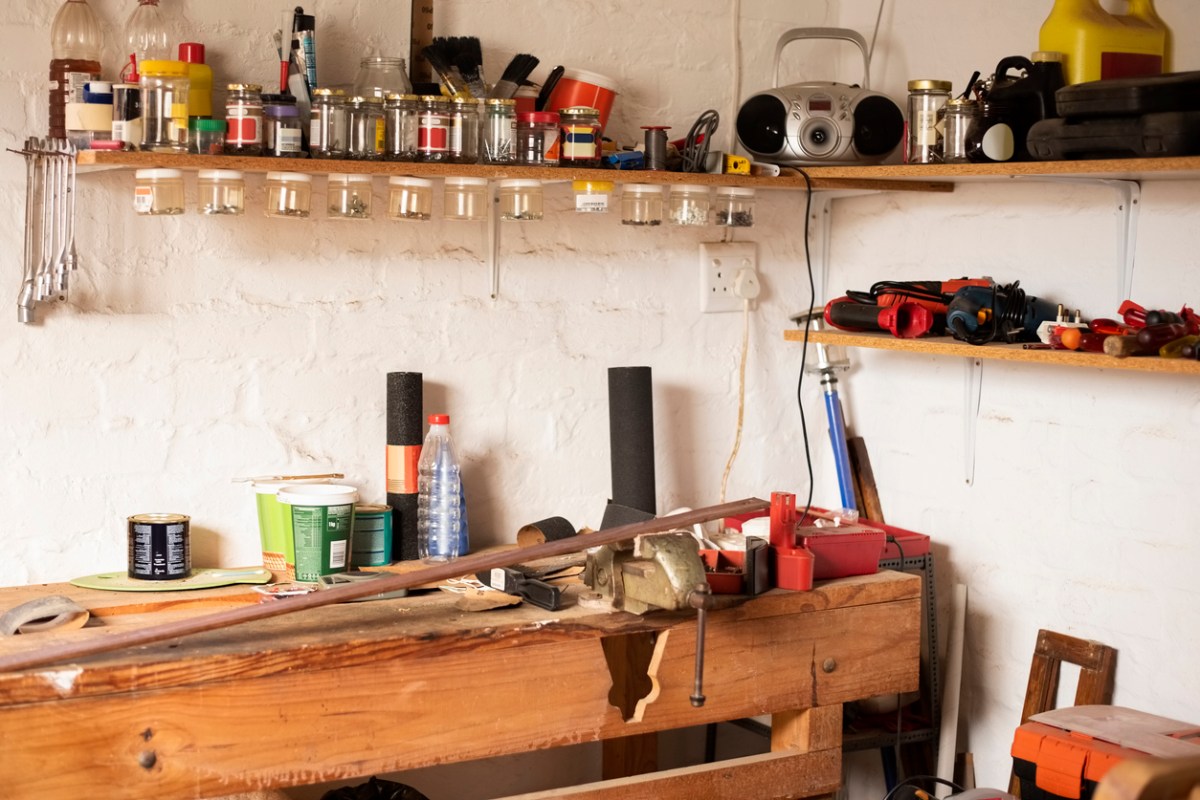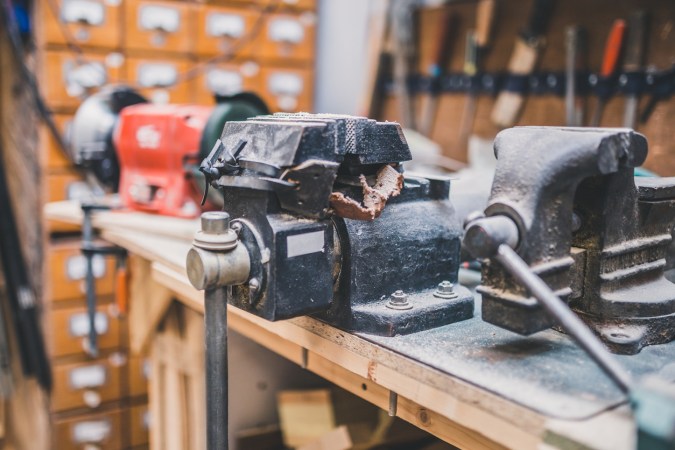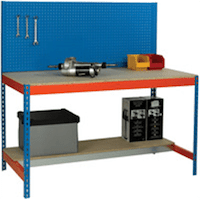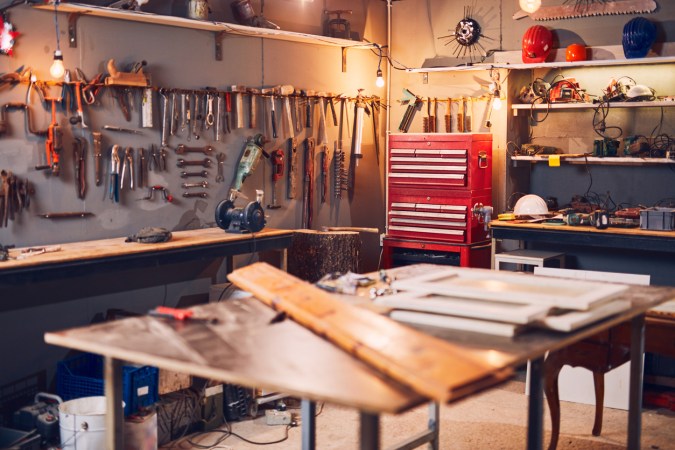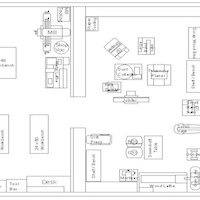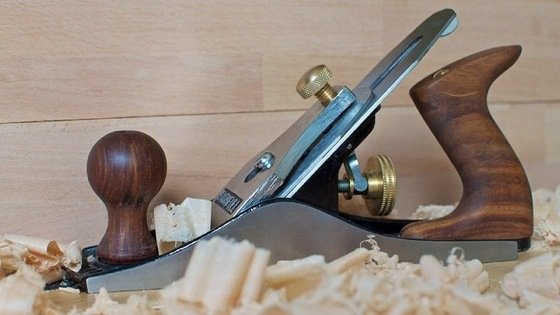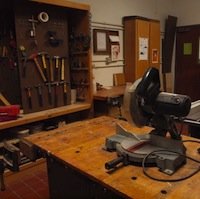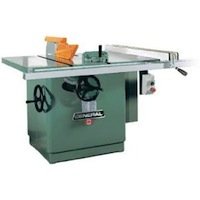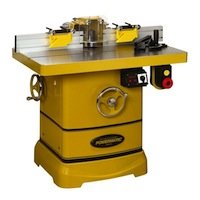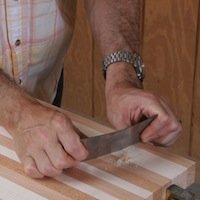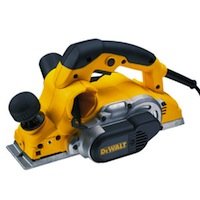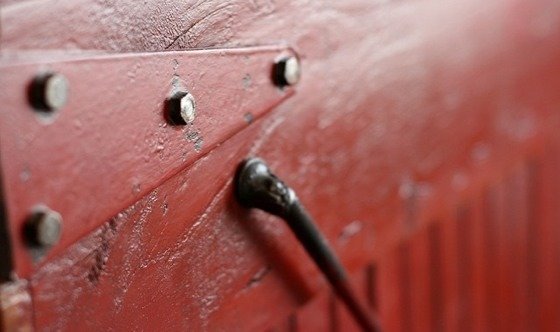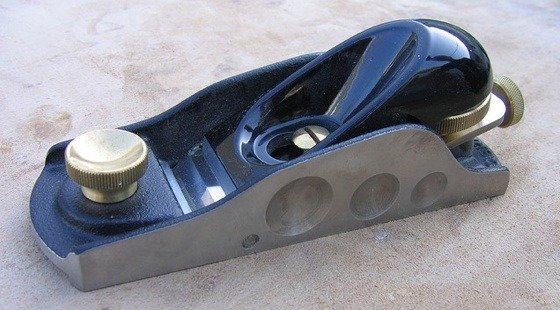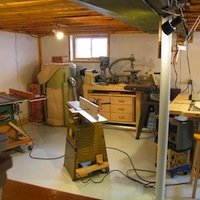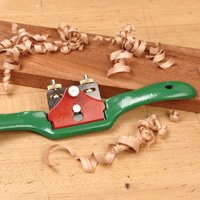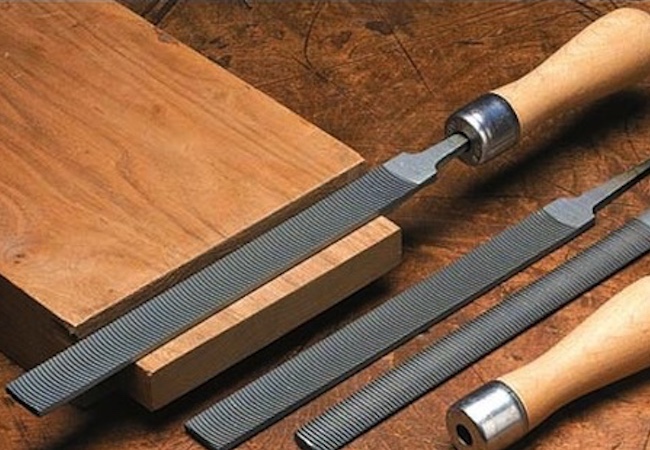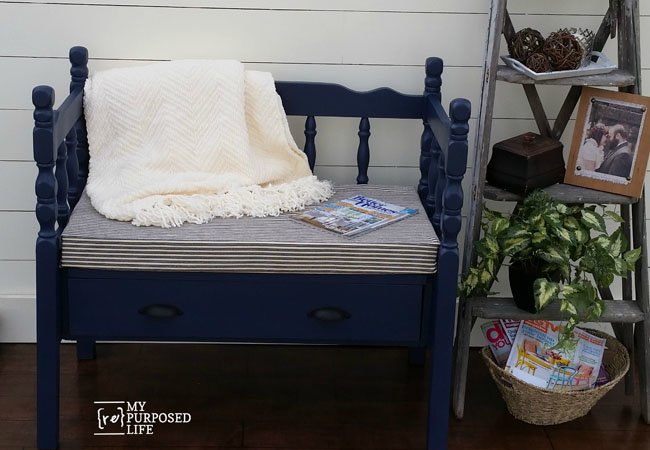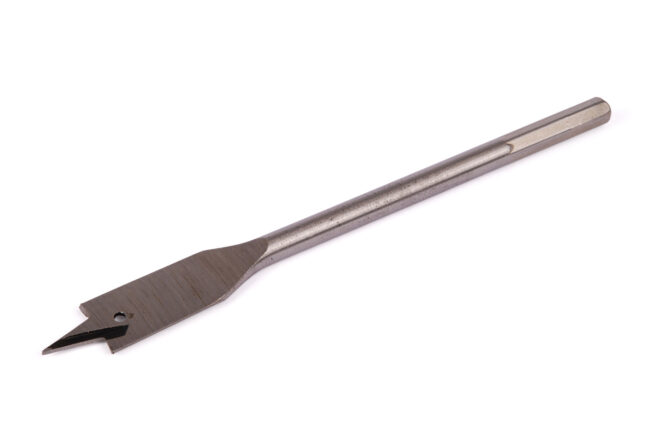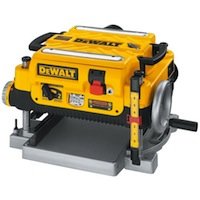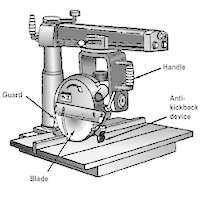We may earn revenue from the products available on this page and participate in affiliate programs. Learn More ›
The woodworking bench is to the workshop as bases are to the game of baseball: Without a proper bench at which to work, you’ll be like a base runner with no place to go. But unlike baseball diamonds, the shape, proportion and size of workbenches are infinitely variable.
If there’s one constant in benches of today and of yore, it’s their very diversity. A good bench is a bench that suits its user’s needs, that helps the worker accomplish his or her tasks faster, better, or with a higher degree of safety. Which means, in short, there is no one model that suits everybody.
What Is a Woodworking Bench?
In ancient times, the woodworker’s bench consisted of a plank or split log with four splayed legs. Descendants of those benches are manufactured today, usually with a top of hardwood slabs glued together. The norm nowadays is four straight legs supporting the bulk above, often with braces and a shelf below. Despite the improvements, the linkage to Greek and Roman antecedents is still evident.
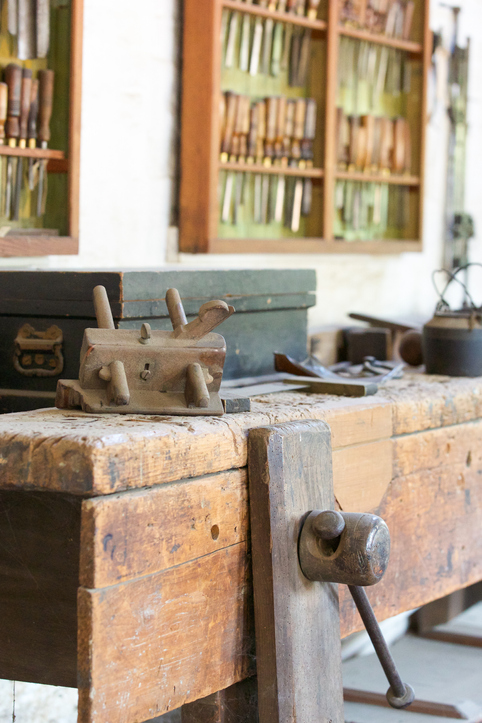
Workbenches have flat tops, though sometimes at the rear there is a cavity called a tool well that contains tools and components (and prevents them from falling off). One advantage of having the well set into the top of the bench is that, even with a variety of objects in the well, a large sheet of material can still be laid flat over the entire surface of the bench; the contents of the tool well offer no interference.
The front edge of a woodworker’s bench is usually lined with square holes positioned at regular intervals. These holes hold bench dogs and holdfast clamps in place for securing work pieces. Beneath the top of the bench, some cabinetmaker models feature single storage drawers, others several drawers and even cupboards incorporated into a case-like base.
At the rear, many benches also have a slot cut in them for tools. Tools in use like chisels and drivers can be temporarily slid into the slot, and the handles protruding from the bench top are easy to reach.
As simple as its elements are, the workbench is more than a tabletop with legs, a well, and a few holes. Virtually everything in the workshop comes to rest on the bench at some point, even if only between operations at other stations. Planning and layout, cutting and shaping, assembling and finishing–all can be, and often are, performed on the benchtop. The better the design, and the better suited its size and configuration to your labors, the more efficient a tool it will be.
What Sort of Bench Do You Need?
Consider the questions that follow if you’re not sure.
SIZE? SHAPE?
What do all benches have in common? Each has a work surface on the top that’s essentially flat. Otherwise, workbenches tend to be as varied as the uses to which they are put.
I’ve seen antique cabinetmakers’ benches that are sixteen and seventeen feet long, more than three feet wide, and supported by a dozen drawers and doors—and that weigh as much as a felled oak tree. In contrast, jewelers’ cabinets seem to be on a dollhouse scale, with tiny tools to match. For most of us, however, space limitations preclude the biggest, and the smallest are just not big enough.
A good size is five to seven feet long and two to three feet wide.
PERMANENT OR PORTABLE?
This is a distinction that decides much about your bench choice: Is it to remain stationary or must it fold, roll, or otherwise make itself scarce between jobs? Large, heavy benches are more stable and, in general, more adaptable to different jobs (sometimes several at once). But the bigger the bench, the more hassle involved with stowing it. Portable workbenches are relatively lightweight and can be moved from job site to job site and packed away out of sight when not in use.
WHAT HEIGHT IS RIGHT?
Old benches tend to be lower. People were shorter then, that’s part of the explanation. But another factor is leverage: When tools are powered by human muscles alone, leverage and gravity are invaluable allies to be enlisted. A lower work surface allows for more pressure from above.
If you have a choice of bench heights, as you will if you elect to make your own bench, you might find it expedient to make it the same height as your table or radial-arm saw. That way its surface can be used as a table extension to support long boards being cut.
One traditional rule of thumb for benches is that they should be approximately the height of their user’s hip joint. In practice, this generally means in the range of thirty-three to thirty-six inches.
Be sure to remember the surprising range of benchtop accessories, some of which can help make your bench more useful. Jigs and dogs and stops and clamps, among other elements, are essential to most benches, as are vises. Before buying or building your bench, decide what your needs are for devices that will hold your workpieces firmly.
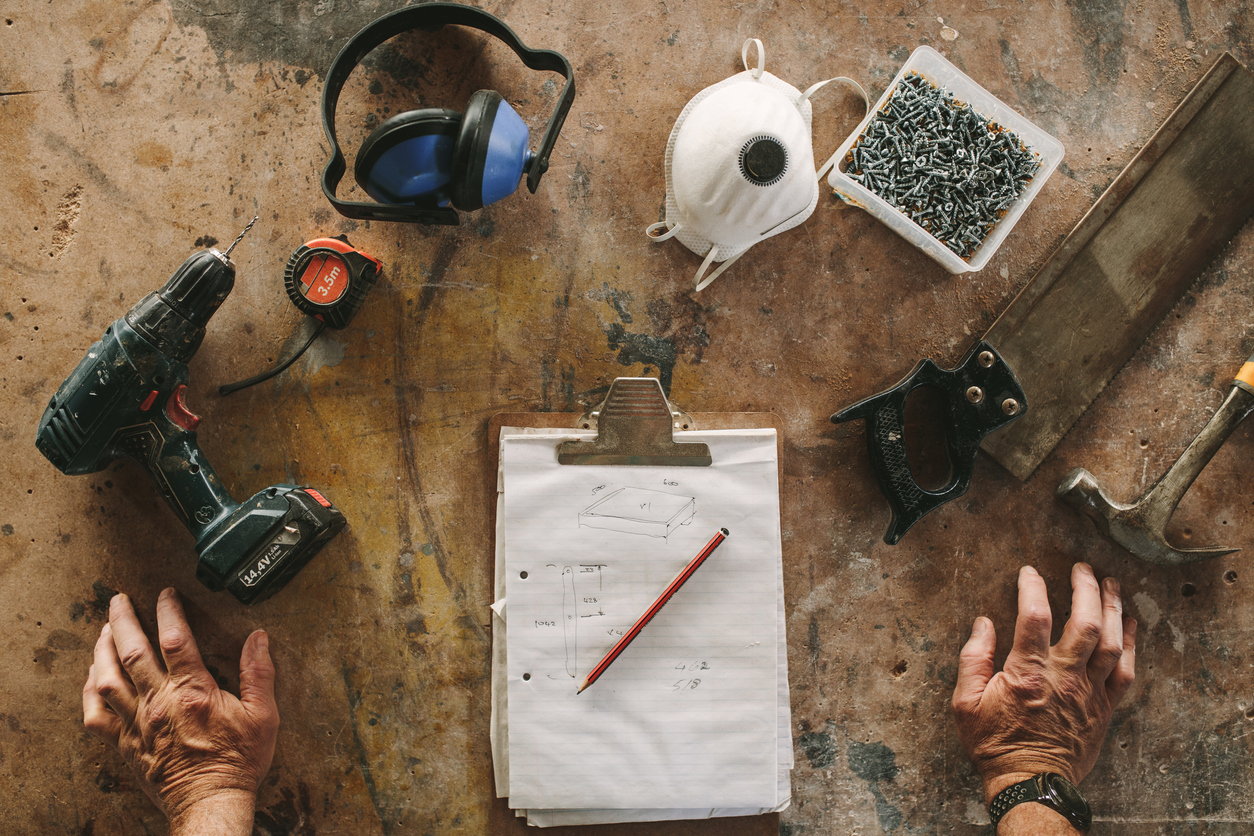
Draw Yourself a Picture
As with your workshop as a whole, a simple drawing of your workbench can help you think through your needs, and determine the materials required, should you elect to make your own. Again, graph paper makes the task easier.
You may even want to put yourself in the picture. If your workshop space already exists, find a large piece of cardboard, wallboard, or plywood that’s about the size of the workbench top you envision. Find a couple of stools or chairs, perhaps a few books, and turn them into stanchions to support the “benchtop.” Is it too big for the space? Is it large enough for the tasks you envision will be performed upon it?
Once you decide upon the right shape and size, decide where the vise will go. Or will there be two vises? And whether you’ll have one set of dog holes or two. Think it through, then go back to your graph paper.
If you opt for a bench with drawers or cabinets built into its base, don’t forget the toe spaces: Leave a space roughly three inches deep and four inches wide at floor level for your toes, just like kitchen cabinets. The absence of a toe space means you’ll be forever kicking the face or sides of the cabinets which is irksome and, with tools in hand, potentially dangerous. And you’ll have to lean over farther to reach the back of the benchtop.

